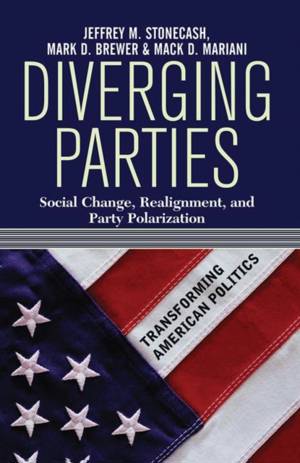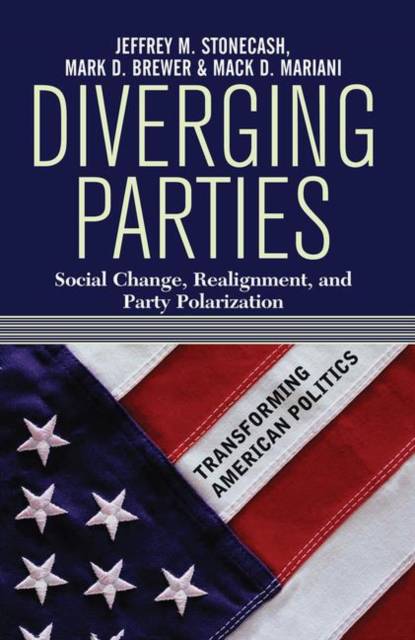
- Retrait gratuit dans votre magasin Club
- 7.000.000 titres dans notre catalogue
- Payer en toute sécurité
- Toujours un magasin près de chez vous
- Retrait gratuit dans votre magasin Club
- 7.000.0000 titres dans notre catalogue
- Payer en toute sécurité
- Toujours un magasin près de chez vous
Diverging Parties
Social Change, Realignment, and Party Polarization
Jeffrey M Stonecash, Mark D Brewer, Mack Mariani
Livre relié | Anglais
290,45 €
+ 580 points
Format
Description
Explores how redistricting, demographic shifts, and political polarization are impacting legislation and voting behavior in the US Congress. . Party polarization in the House of Representatives has increased in recent decades. Explaining this development has been difficult, given current interpretations of American elections. The dominant framework for interpreting elections has been to see them as candidate-centered, or individualistic. This framework may have seemed appropriate as a way to see elections during the 1970s and 1980s, when identification with parties declined and split-ticket voting increased. With increasing party differences, however, the presumptions that campaigns focus on candidates separate from parties, and that voters are less partisan in their voting, do not provide a satisfactory framework for understanding our current situation. This proposed book explains the emergence of party polarization by focusing on how the constituencies of House districts affect partisan outcomes and the subsequent voting behavior of House members. This proposed analysis is premised on the simple argument that members are elected from districts, and an explanation of polarization must begin with districts. The origins of polarization lie in the realignment of the electoral bases of the parties, and the shifting demographic composition of America. Liberal voting is more likely among members from urban, lower-income, largely non-white districts. Conservative voting is more likely among members from higher-income, largely white districts. Realignment has resulted in Democrats representing urban, lower-income, heavily non-white districts, while Republicans are more likely to come from suburban-rural, more affluent, white districts. Perhaps most important, the percentage of districts with a substantial proportion of non-whites is steadily increasing in the United States. The analysis will focus primarily on changes since the 1960s.
Spécifications
Parties prenantes
- Auteur(s) :
- Editeur:
Contenu
- Nombre de pages :
- 208
- Langue:
- Anglais
Caractéristiques
- EAN:
- 9780367315412
- Date de parution :
- 28-08-19
- Format:
- Livre relié
- Format numérique:
- Genaaid
- Dimensions :
- 157 mm x 231 mm
- Poids :
- 385 g

Les avis
Nous publions uniquement les avis qui respectent les conditions requises. Consultez nos conditions pour les avis.






